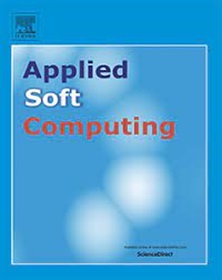Heterogeneous feature selection with group structure mining in fuzzy decision systems for medical diagnosis
IF 6.6
1区 计算机科学
Q1 COMPUTER SCIENCE, ARTIFICIAL INTELLIGENCE
引用次数: 0
Abstract
In practical applications such as medical diagnosis and group decision making, the potential structural information contained in multi-dimensional features in the form of group domains plays an important role. However, most existing feature selection methods adopt transformed feature spaces for group structure analysis, which lack intrinsic semantic information interpretation. Meanwhile, fuzzy and uncertain heterogeneous data acquired from multiple devices increase the difficulty of task learning. Motivated by these two issues, this work devises a Heterogeneous Feature Selection method with Group Structure Mining in fuzzy decision systems (HFS-GSM), which follows the principle of one “strategy" and one “mechanism". Specifically, a feature group generation strategy based on fuzzy approximation Markov blanket is first designed for mining features with group structure, which introduces the concept of Markov blanket into the fuzzy rough set and utilizes the idea of approximation and fuzzy uncertainty measures. Then, a fuzzy dependency-based overlapping group elimination mechanism is proposed by attribution division, which avoids local redundancy while preserving global discriminative information. Furthermore, the effectiveness of HFS-GSM is verified in comparison with seven representative feature selection methods on publicly available medical datasets. Finally, medical diagnosis data provided by a hospital are obtained to demonstrate the reliability and utility of HFS-GSM in practical applications.
基于群结构挖掘的医学诊断模糊决策系统异构特征选择
在医疗诊断和群体决策等实际应用中,以群域形式存在的多维特征所包含的潜在结构信息发挥着重要作用。然而,现有的特征选择方法大多采用变换后的特征空间进行群结构分析,缺乏内在的语义信息解释。同时,从多个设备获取的模糊、不确定的异构数据增加了任务学习的难度。基于这两个问题,本文设计了一种基于群结构挖掘的模糊决策系统(HFS-GSM)异构特征选择方法,该方法遵循一个“策略”和一个“机制”的原则。针对群结构特征的挖掘,首先设计了一种基于模糊逼近马尔可夫毯的特征组生成策略,将马尔可夫毯的概念引入模糊粗糙集,利用逼近和模糊不确定性测度的思想;在此基础上,提出了一种基于模糊依赖的重叠组消除机制,在保留全局判别信息的同时避免了局部冗余。此外,在公开的医疗数据集上,与7种代表性的特征选择方法进行了比较,验证了HFS-GSM的有效性。最后,以某医院提供的医疗诊断数据为例,验证了HFS-GSM在实际应用中的可靠性和实用性。
本文章由计算机程序翻译,如有差异,请以英文原文为准。
求助全文
约1分钟内获得全文
求助全文
来源期刊

Applied Soft Computing
工程技术-计算机:跨学科应用
CiteScore
15.80
自引率
6.90%
发文量
874
审稿时长
10.9 months
期刊介绍:
Applied Soft Computing is an international journal promoting an integrated view of soft computing to solve real life problems.The focus is to publish the highest quality research in application and convergence of the areas of Fuzzy Logic, Neural Networks, Evolutionary Computing, Rough Sets and other similar techniques to address real world complexities.
Applied Soft Computing is a rolling publication: articles are published as soon as the editor-in-chief has accepted them. Therefore, the web site will continuously be updated with new articles and the publication time will be short.
 求助内容:
求助内容: 应助结果提醒方式:
应助结果提醒方式:


